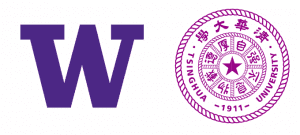
With a singular exception, the Greater Seattle area has taken its place among the world’s R&D elite in driving the future of computer operating systems, electronic commerce, virtual gaming, online travel, and a portfolio of other sector leaders at the vanguard of advanced technology.
The Seattle area has relied on a single major research university, the University of Washington, while nearly every other technology center in the country has at least two such institutions. For example, Silicon Valley’s development is closely linked to the strength of two institutes of higher education, the University of California, Berkeley and Stanford.
“We’ve long realized we’re at a relative competitive disadvantage when it comes to higher education,” said Brad Smith, Microsoft’s general counsel.
That singular distinction is about to change in a dual alliance that will be pan-Pacific. A leadership team comprised of top academic and business leaders has unveiled a plan to create a new institute of learning, with the goal of strengthening the educational foundation of the region’s high-tech economy.
With plans to open in the Fall of 2016, a prestigious institute to be named the Global Innovation Exchange, will offer a master’s degree program in technology innovation. The institute represents a partnership between the University of Washington and one of China’s leading research universities, Tsinghua University.
 The school’s faculty will come from the University of Washington, Tsinghua and other international universities the Global Innovation Exchange expects to attract as partners. Investing in its own backyard, Microsoft will contribute $40 million to help the institute get started.
The school’s faculty will come from the University of Washington, Tsinghua and other international universities the Global Innovation Exchange expects to attract as partners. Investing in its own backyard, Microsoft will contribute $40 million to help the institute get started.
“This will be the first time a Chinese university has a physical spot in the U.S.,” explained Dr. Ana Mari Cauce, interim president of the University of Washington. Dr. Cauce indicated that Tsinghua is expected to help recruit Chinese students to the institute, providing an important global aspect.
A 2013 report by the Washington Student Achievement Council, a state agency focused on education, said the state needed to produce more than 2,700 additional bachelor’s degrees annually in computer science to meet projected employer demand in the region through 2021. The University of Washington currently awards about 300 computer science degrees a year. The institute will not fill the gap, at least not initially, since class sizees will start out small hoping awarding around 300 graduate level degrees.
 A new 130,000-square-foot computer science building is being designed to allow the university to double the number of degrees, to 600, it awards annually in the field.
A new 130,000-square-foot computer science building is being designed to allow the university to double the number of degrees, to 600, it awards annually in the field.
A leading-edge curriculum is already taking shape. According to reports, the first students will work on projects related to wearable technology and the “Internet of Things.” The institute is bent on sharpening its focus on “project-based learning,” in which students work on intensive, short-term undertakings rather than longer-term strategic vision
“China and the United States are two leading economies with enormous strengths in technological innovation,” said Qiu Yong, president of Tsinghua University. “The higher educational collaboration between them facilitates the scientific and technological progress and social development around the world.”
In a nod to one of the top technical universities in the country, M.I.T., the Massachusetts Institute of Technology, the founders of the Global Innovation Exchange have already taken to referring to it by the initials G.I.X. How do you pronounce the G.I.X. name? Why “geeks” of course! [24×7]

















